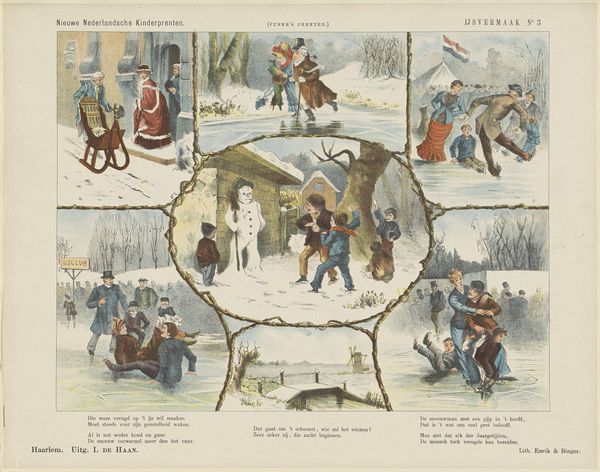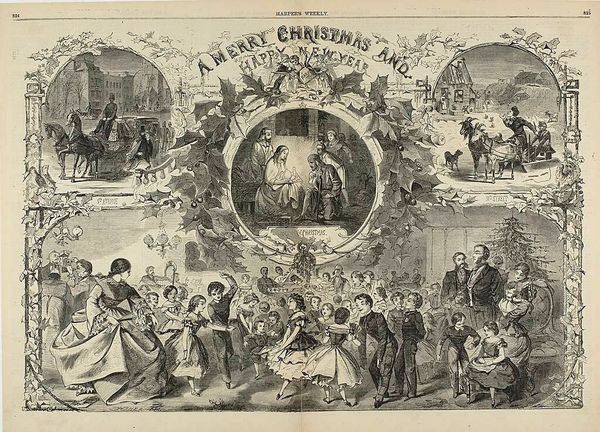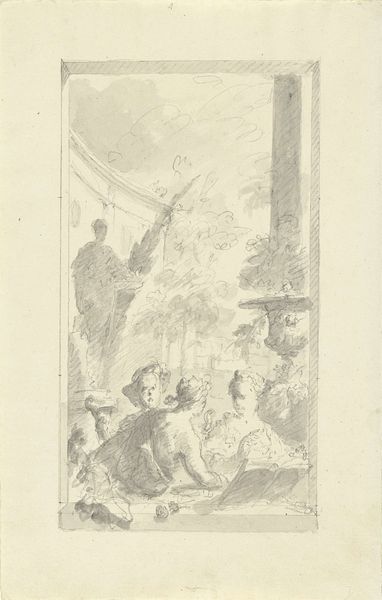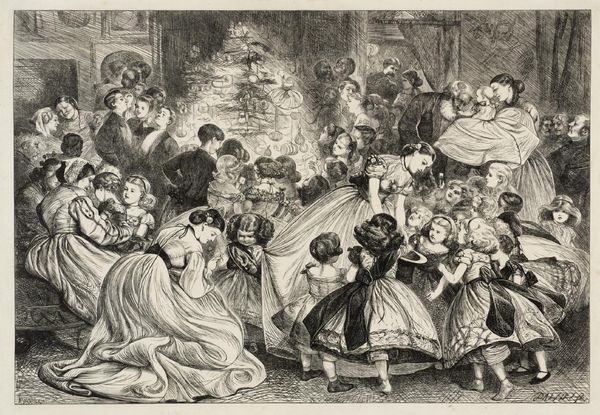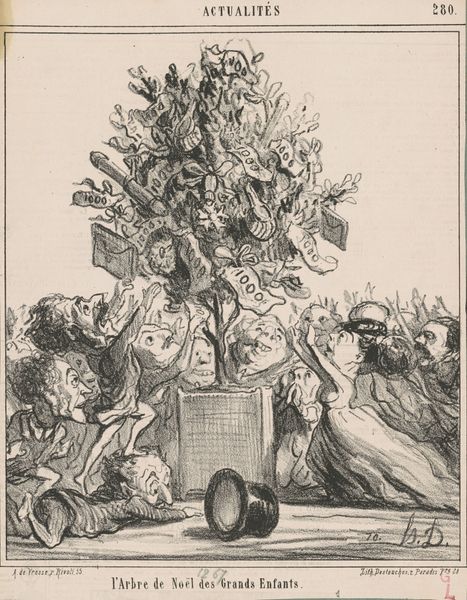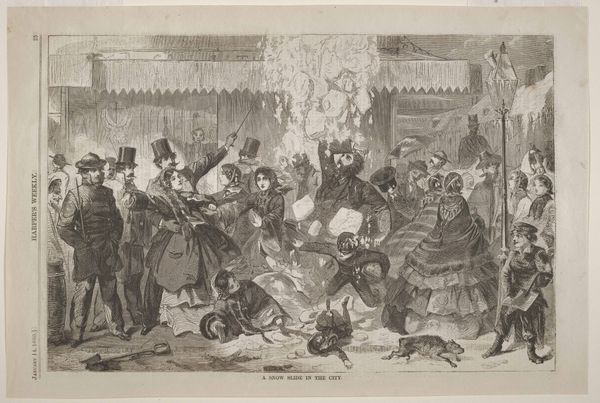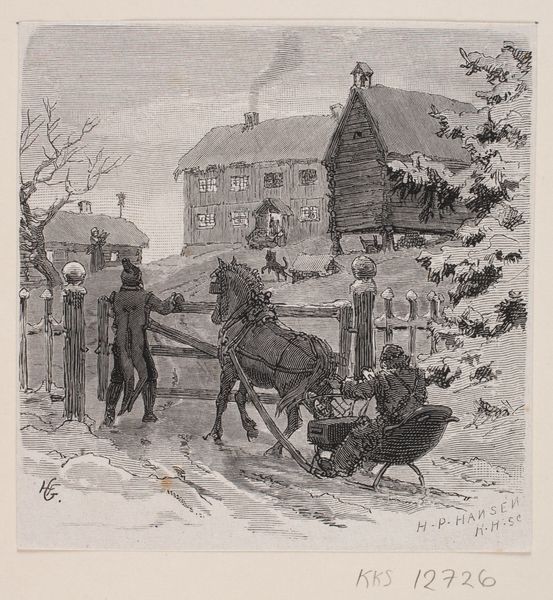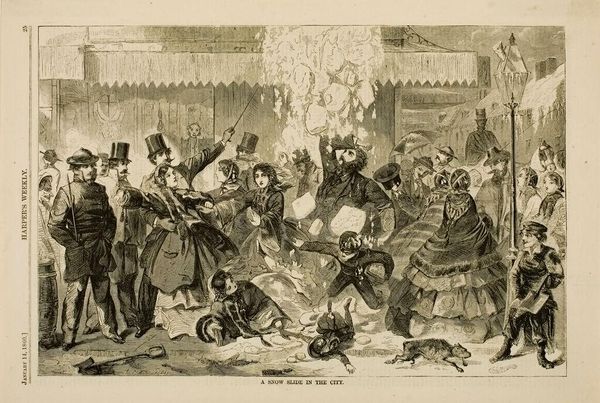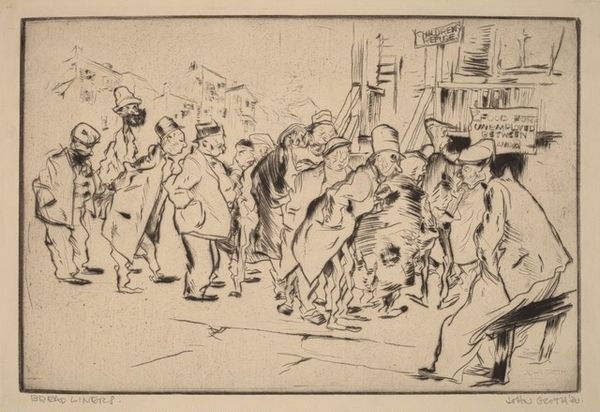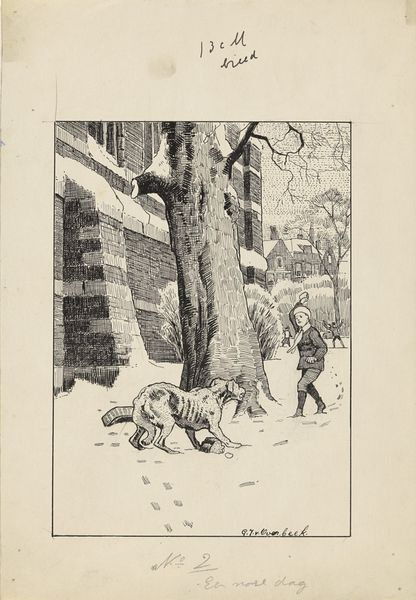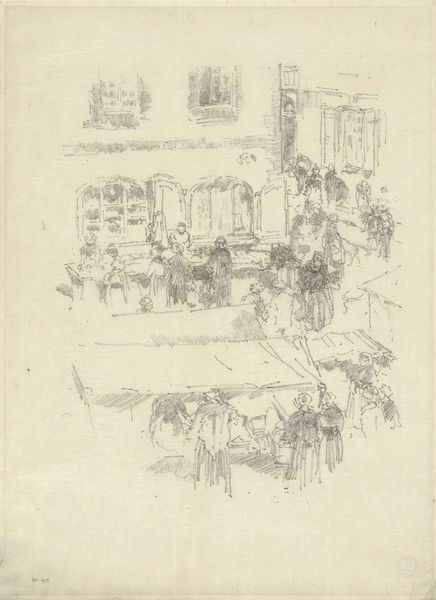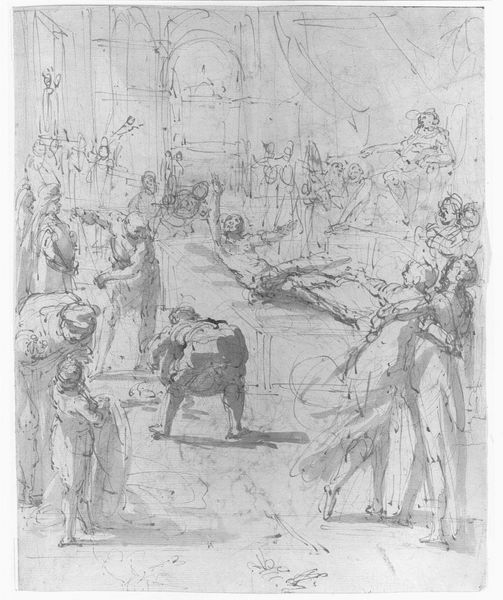
Copyright: Public domain
Editor: So, this is "Merry Christmas" by William James Glackens, made around 1910 using mixed media like coloured pencil. It's quite a scene— a crowded interior filled with children. I’m immediately drawn to how Glackens captures the sheer energy of the moment. What's your perspective? Curator: Looking at this work through a materialist lens, I am drawn to how the “handmade” feel using mixed media techniques allows Glackens to engage in a discourse around labour. The Ashcan School, which Glackens was a part of, often depicted everyday life, including scenes of work and leisure. What materials were available, what did they cost, who had access, who made those materials, and so forth? Editor: That’s fascinating! I hadn't considered the materials themselves as part of the story. So the choice of readily available materials for illustration adds a dimension of accessibility to this festive celebration? Curator: Precisely. Notice how the use of coloured pencil and watercolour illustration might also be read through a class lens in early 20th century America. This work presents the relationship between labour, materiality, and, perhaps, social aspiration in representing a somewhat idealized scene. How are we implicated as consumers or producers? Are we meant to admire this lifestyle or aspire to something better? Editor: So it’s not just a snapshot of a Christmas party but a commentary on the broader social landscape and production processes? Curator: Exactly. Considering Glackens’ method challenges the idea of the detached artistic genius and places him within a network of material production and social relationships. Editor: I see! Considering all the mixed media in this artwork does offer a different entry point into understanding the artist's purpose. I appreciate how this changes my perspective on the artwork's intent. Curator: Yes, analyzing the artmaking process invites us to think about labour and economics while reconsidering who and how objects are made in society.
Comments
No comments
Be the first to comment and join the conversation on the ultimate creative platform.

